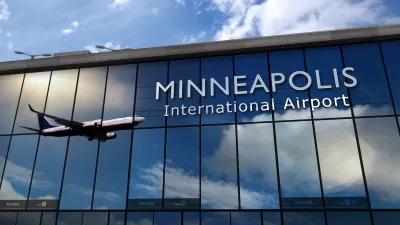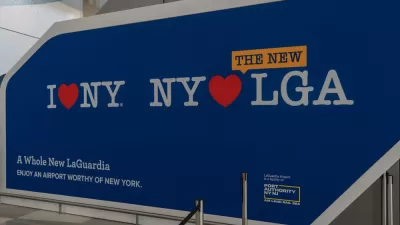Unbounded by budgetary concerns, lengthy approvals processes, or NIMBY neighbors, China is building 100 new airports over the next two years. Does their process offer any lessons for how to fix America's crumbling air infrastructure?
"Three years after it opened, Terminal 2 at Hongqiao International Airport in Shanghai stands as a testament to ’s economic ambitions, and to its unique approach to infrastructure development," writes David Barboza. "With extraordinary government support, Shanghai built a massive airport terminal in 32 months as part of a $9 billion transportation hub that connects the air terminal with the city’s buses, subway platforms and a new high-speed railway network.
“'They know how to build things and how to do it efficiently,' said Jeffrey N. Thomas, chief executive of Landrum & Brown, an American firm that helped design the new Shanghai terminal. 'That area went from plans on a piece of paper to a complex that has 14 million square feet in less than four years. That’s hard to do.'”
"At a time when many American airports are falling into disrepair, China is quickening its air travel development, with plans to build nearly 100 more airports by 2015, including some at high altitudes, where special landing gear is required. Many of those airports are expected to lose money, but that hasn’t deterred the government, which views the expansion of infrastructure as vital to economic development."
FULL STORY: Airports in China Hew to an Unswerving Flight Path

Study: Maui’s Plan to Convert Vacation Rentals to Long-Term Housing Could Cause Nearly $1 Billion Economic Loss
The plan would reduce visitor accommodation by 25,% resulting in 1,900 jobs lost.

North Texas Transit Leaders Tout Benefits of TOD for Growing Region
At a summit focused on transit-oriented development, policymakers discussed how North Texas’ expanded light rail system can serve as a tool for economic growth.

Why Should We Subsidize Public Transportation?
Many public transit agencies face financial stress due to rising costs, declining fare revenue, and declining subsidies. Transit advocates must provide a strong business case for increasing public transit funding.

How to Make US Trains Faster
Changes to boarding platforms and a switch to electric trains could improve U.S. passenger rail service without the added cost of high-speed rail.

Columbia’s Revitalized ‘Loop’ Is a Hub for Local Entrepreneurs
A focus on small businesses is helping a commercial corridor in Columbia, Missouri thrive.

Invasive Insect Threatens Minnesota’s Ash Forests
The Emerald Ash Borer is a rapidly spreading invasive pest threatening Minnesota’s ash trees, and homeowners are encouraged to plant diverse replacement species, avoid moving ash firewood, and monitor for signs of infestation.
Urban Design for Planners 1: Software Tools
This six-course series explores essential urban design concepts using open source software and equips planners with the tools they need to participate fully in the urban design process.
Planning for Universal Design
Learn the tools for implementing Universal Design in planning regulations.
City of Santa Clarita
Ascent Environmental
Institute for Housing and Urban Development Studies (IHS)
City of Grandview
Harvard GSD Executive Education
Toledo-Lucas County Plan Commissions
Salt Lake City
NYU Wagner Graduate School of Public Service




























